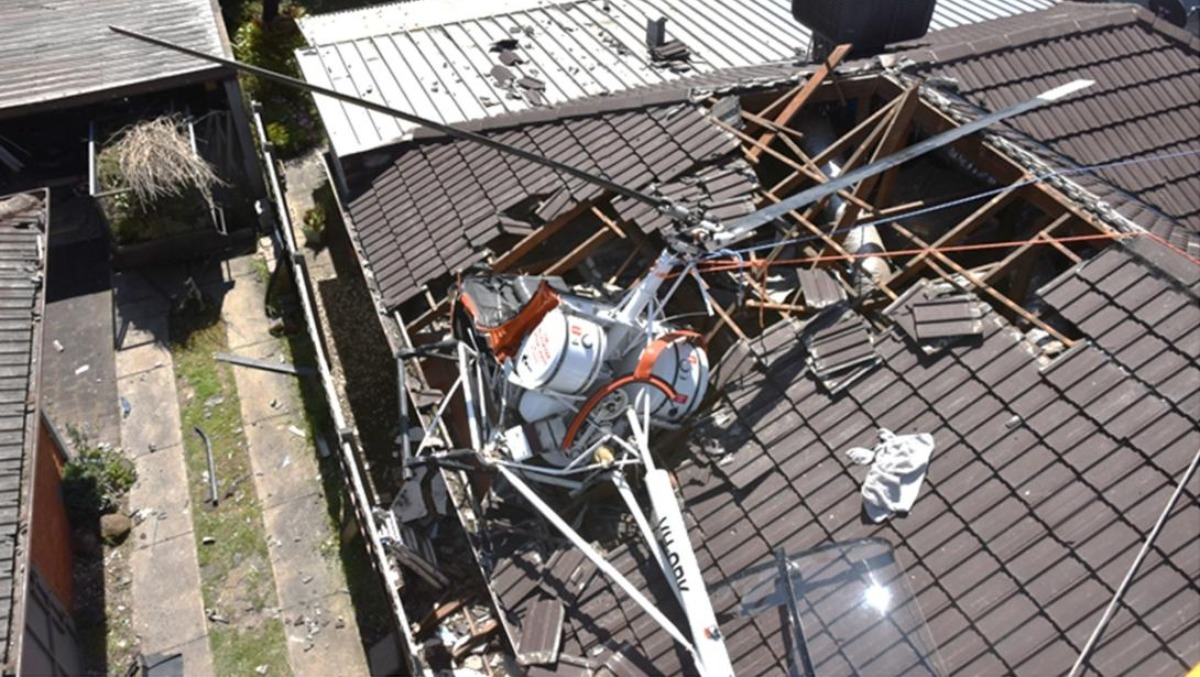
The student pilot of a helicopter that crashed into the roof of a house didn’t immediately realise his engine had lost power – leaving him unable to reach a safe landing area.
However, an ATSB report on the November 2022 accident near Victoria’s Moorabbin Airport, involving Hughes 269C three-seat light helicopter, was unable to find the cause of the defect.
“As the helicopter climbed to about 650 ft above ground level, the engine lost power,” the ATSB’s director of transport safety, Stuart Macleod, said.
“While the pilot identified a reduction in performance at this time, they did not immediately recognise the engine had lost power.”
The report notes that while the pilot – who survived with serious injuries – was troubleshooting the reduction in engine performance, the helicopter passed two suitable sites for a forced landing.
“When the pilot recognised a forced landing was required, they then did not identify a nearby football oval as the closest suitable area, possibly due to it being obscured by the airframe or instrument panel,” Macleod said.
“Instead, they identified a school ground and attempted a landing there, but collided with rooftops short of this intended location as the helicopter had insufficient height.”
The ATSB said the accident highlights the challenges pilots face when confronted with a loss of engine power at low level and with few suitable landing areas available.
“Pilots can best mitigate the effects of a power loss by forward planning, which reduces your mental workload under stress,” Mr Macleod said.
The Civil Aviation Safety Authority has provided guidance on this topic with its Guidelines for helicopters – suitable places to take off and land circular.
This recommends that pilots make themselves aware of suitable forced landing areas along their planned flight path before take-off, from the lift-off point to a safe manoeuvring height.
“The engine power loss occurred at low height over a densely populated area, presenting a challenging scenario for the inexperienced student pilot,” Macleod said.
“While in this case, the selected landing location was unable to be reached, importantly, the pilot maintained control of the helicopter to maximise survivability.”
Reports at the time identified the pilot as a 47-year-old man from Mt Martha.















